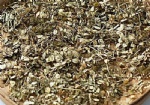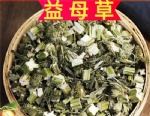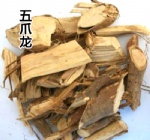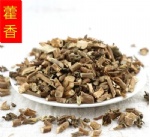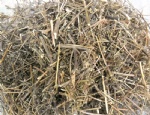
|
KWOK SHING HONG |
|
|||
Products CategoryContact Us
Add: China |
HERBA PORTULACAE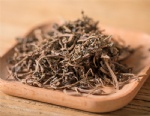

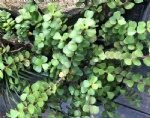
Product name : HERBA PORTULACAE Item : 79351484523 Details :Portulaca oleracea L. is an annual herbaceous plant of the family Portulaceae, belonging to the genus Portulaca. The entire plant is hairless; The stem is flat or reclined, spread out, multi branched, cylindrical, light green or with a dark red hue; Leaves alternate or nearly opposite, flat and thick, obovate, dark green above, light green or reddish below; Petals yellow, obovate; Sepals green, helmet shaped; Fruit ovoid; The seeds are small, obliquely spherical, black brown, and glossy; The flowering period is from May to August, and the fruiting period is from June to September. [5] Due to its leaves resembling horse teeth and smooth like amaranth, it is named purslane and is recorded in the Compendium of Materia Medica. Portulaca oleracea is native to Brazil and has been widely distributed worldwide. It is commonly found in temperate and tropical regions, and is cultivated in various parts of China. Portulaca oleracea prefers high humidity, is resistant to drought and waterlogging, has a positive orientation, and has strong survival ability; Born in vegetable gardens, farmland, and roadsides, it is a common weed in the field; Prefer fertile soil, with neutral and weakly acidic soils being preferred; The reproduction method is seed reproduction. Purslane has a sour and cold taste, and has the effects of clearing heat and detoxifying, cooling blood to stop bleeding, and stopping dysentery. It is mainly used to treat heat toxic blood dysentery, heat toxic sores, metrorrhagia, and bloody stools, as recorded in the Compendium of Materia Medica and the Newly Revised Materia Medica. Portulaca oleracea can be eaten as a vegetable, and it is classified as a vegetable in the Compendium of Materia Medica, which records: "People often pick seedlings, boil and sun them into vegetables. In the past, people dried them in the sun and pickled them with salt before eating them as salted vegetables. Portulaca oleracea contains a large amount of potassium salt, which has good diuretic and anti-inflammatory effects. It contains carotene, which can promote the healing of ulcers; Rich in fatty acids, it plays a role in preventing heart disease. However, people with spleen and stomach deficiency, diarrhea, loose stools, and pregnant women are prohibited from consuming purslane. Nutrient composition of purslane: Portulaca oleracea is rich in nutrients such as dihydroxyethylamine, malic acid, glucose, calcium, phosphorus, iron, as well as vitamin E, carotene, vitamin B, and vitamin C. Portulaca oleracea has a prominent nutritional characteristic ω— The content of 3 fatty acids is higher than that of any plant. ω— 3 fatty acids can inhibit the absorption of bile acids by the human body, reduce blood cholesterol concentration, improve the elasticity of blood vessel walls, and are very beneficial for the prevention and treatment of cardiovascular diseases. Portulaca oleracea contains a large amount of potassium salt, which has good diuretic and anti-inflammatory effects. It contains carotene, which can promote the healing of ulcers; Rich in fatty acids, it plays a role in preventing heart disease. However, people with spleen and stomach deficiency, diarrhea, loose stools, and pregnant women are prohibited from consuming purslane. Purslane consumption: Portulaca oleracea can be eaten as a vegetable, and it is classified as a vegetable in the Compendium of Materia Medica, which records: "People often pick seedlings, boil and sun them into vegetables. In the past, people dried them in the sun and pickled them with salt before eating them as salted vegetables. Purslane can be eaten raw or cooked, and its soft stems can be cooked like spinach. But if you're not used to its strong taste, don't use too much. The leaves on the top of the purslane stem are very soft, which can be cooked like watercress, used to make soup or sauce, mayonnaise and stew. Purslane can be made with crushed radish or mashed potatoes, or cooked with onions or tomatoes. Its stems and leaves can be marinated in vinegar for consumption. Portulaca officinalis: Purslane has a sour and cold taste, and has the effects of clearing heat and detoxifying, cooling blood to stop bleeding, and stopping dysentery. It is mainly used to treat heat toxic blood dysentery, heat toxic sores, metrorrhagia, and bloody stools, as recorded in the Compendium of Materia Medica and the Newly Revised Materia Medica. [Tibetan Medicine] Cangeri: Whole herb treatment for red and white dysentery, red and white vaginal discharge, enteritis: external use for treating erysipelas, carbuncle and swelling, insect snake bites, "Tibetan Materia Medica". Purslane: The whole herb is used to treat red and white dysentery, red and white vaginal discharge, enteritis, gonorrhea, and external use to treat boils and erysipelas. "Chinese Tibetan Medicine". Zong Xinduo: "Dian Yao Lu" for treating dizziness and dizziness with whole herbs. Zong Xinduo: The whole plant is used for dizziness and dizziness in the "Annals of Yunnan Province". Zong Xinduo: The whole herb is used to treat dizziness and dizziness. [Dai Medicine] Pabaliang (West Dai), Yaxi Code, Yaxi Ma (De Dai): The whole herb is used to treat lung heat, cough, and dysentery. "Dian Yao Lu". Pamilang Liang: The entire plant is used for lung heat, cough, and dysentery in the Yunnan Provincial Annals. Pabanliang: Treats palpitations, headaches, lung diseases, and knife injuries in Dai Medicine. Pamilang Liang: The whole herb is used to treat palpitations, headaches, tuberculosis, cuts, sprains, and joint tendons. Continuation of "Dai Yao Zhi". Ya Xima: The whole herb is used to treat lung heat and cough. "National Medical Records II. 【 Hani Medicine 】 Buze: The aboveground part is used to treat dysentery, diarrhea, and blood clots. Buze Lugu Tea: The entire plant is used for diarrhea, dysentery, and blood clotting in the "Yunnan Provincial Annals". Bu Ze, Lu Bi Gu Tea: The whole herb is used to treat diarrhea, dysentery, and bloody bleeding. 【 Jing Yao 】 Zhao Tan: The Complete Grass Treatment of Dysentery "Ethnic Medicine Records II". 【 Imperial Medicine 】 Portulaca oleracea: whole herb for clearing heat and detoxifying, quenching thirst, killing insects, used for dysentery, various swollen and malignant ulcers, golden ulcers, and internal fistula. 【 Imperial Medicine Records 】. Dejipu: The whole herb is used to treat dysentery, various swollen and malignant ulcers, golden ulcers, and internal fistula. Maonan Medicine: Ma Zhuning: Whole herb treatment for dysentery, enteritis and diarrhea "Guiyao Bian". Ma Zhuning: The whole herb is mainly used to treat dysentery. "National Medical Records II". [Miao Medicine] Huo Wei: The whole herb is used to treat dysentery, enteritis, diarrhea, sore throat, toothache, and nameless swelling. "Gui Yao Bian". Plush Table Pouring: Whole herb treatment for enteritis, diarrhea, dysentery, nephritis, urinary tract infection and edema, ulcer disease, hemorrhoid bleeding, sore throat, toothache, unknown swelling, and carbuncle. "Dian Yao Lu". Plush Table Pouring: The entire strain is used for urinary tract infections, edema, ulcers, sore throat, and toothache; Externally used for the unnamed swollen poison "Dian Provincial Annals". Reibxandmel (Ruixianmei), Vobhmidniangx (Womiyang): Whole herb treatment for pediatric diarrhea and herpes zoster "Miao Medicine". The above ground part is used for dysentery, boils and boils, and insect snake bites. Huo Wei, sudden destruction, down table: The whole herb is mainly used for treating enteritis, diarrhea, dysentery, nephritis, urinary tract infections, edema, ulcer disease, hemorrhoid bleeding, sore throat, and toothache. [Mulao Medicine] Ma You scolded: "The whole herb treats dysentery, enteritis and diarrhea, and paddy field dermatitis." Gui Yao Bian. Ma You scolded: "The whole herb is used to treat dysentery, and the paddy field dermatitis is recorded in" National Medical Records II ". 【 Naxi Medicine 】 Buma: Whole herb treatment for enteritis, dysentery "Dian Yao Lu", "Ethnic Medicine Record II". 【 Pu Mi Yao 】 Ma Zhijian: Treating enteritis, dysentery, diarrhea, pus and blood, heat drenching, urine and blood in the aboveground parts. 【 She Medicine 】 Sour Amaranth Fresh: The whole herb is used to treat hepatitis, as stated in the Journal of Ethnic Medicine II. [Uyghur Medicine] Silk Seed Outi: The whole herb and seeds are mainly used to treat internal heat, long-term low fever, heatstroke, constipation, dysentery, and enteritis. Purslane seed: fruit cures diabetes. 【 Wa Medicine 】 The whole herb is used for red and white dysentery, bruises, swelling, and pain. Tooth fracture and scolding: whole herb treatment for nephritis and swelling, skin diseases "Dian Yao Lu" and "Ethnic Medicine Zhi Er". [Yao Yao] Mo Ruilai: The whole herb is used to treat dysentery, enteritis, diarrhea, and lung heat cough. "Gui Yao Bian". Maya Ma: The entire strain is used for lung heat, cough, nephritis, dysentery, enteritis, hemorrhoids, and bleeding. Maya prickly heat: The whole herb is used to treat lung heat, cough, nephritis, dysentery, diarrhea, and hemorrhoid bleeding. "Dian Yao Lu". Ma Zui Lai, Mo Rui Lai, Ma Ya Ma: The whole herb is used to treat lung heat, cough, nephritis, dysentery, enteritis, diarrhea, hemorrhoid bleeding, and carbuncle swelling. "National Medical Records II. [Yi Medicine] Yan Nianxi: Whole herb treatment for dysentery, fracture "Guiyao Bian". The whole herb is used for lung carbuncle, intestinal carbuncle, diarrhea and dysentery, urethral burning, bloody discharge, hemorrhoids and fistula bleeding, breast carbuncle and scrofula, snake bites, fractures and bruises. Treating dysentery, enteritis, whooping cough, pulmonary tuberculosis, carbuncle and furuncle with whole herbs "Dali Zizhi". Yan Nian Xi Xian: The whole herb is mainly used to treat fractures. 【 Zhuang Medicine 】 Binggu: The whole herb is used to treat dysentery, enteritis, diarrhea, hepatitis, pneumonia, gastric bleeding, vaginal discharge, uterine bleeding, boils, eczema, and herpes zoster. Ba Hui Bo: The whole strain is mainly used for treating dysentery, enteritis, hepatitis, pneumonia, vaginal discharge, gastric bleeding, uterine bleeding, external use for herpes zoster, eczema, sores, boils, redness, and rectal prolapse. Bai Yan Sieve, Bing Gu, Bie Mu Lian, Bing Tou Spoon, Fen Gua, Bai Mi, Ba Lin Fei, Ba Hui Bo: The whole herb is mainly used to treat dysentery, enteritis, hepatitis, pneumonia, vaginal discharge, gastric bleeding, uterine bleeding, herpes zoster, eczema, sores, boils, redness, and swelling. Jingpo Medicine: Treating dysentery, enteritis, and mastitis. "Dehong Medicine Record". [De Ang Medicine] Dao Huai: Its function is the same as that of the Po tribe's "De Hong Medicine Record". 【 Lisu Medicine 】 Oubu'er: Whole herb treatment for acute gastroenteritis, dysentery, appendicitis, mastitis, hemorrhoid bleeding, and vaginal discharge; External treatment for sore, swelling and pain, eczema "Nujiang Medicine". 【 Jing Yao 】 Zhao Tan: Using whole herbs to treat dysentery, enteritis and diarrhea. "Gui Yao Bian". [Dong Yao] Blaming Stele God: The whole herb treats dysentery, enteritis, diarrhea, and fractures. "Gui Yao Bian. Blaming the God of Steles, Blaming the Will: The whole herb is mainly used to treat dysentery, enteritis, and fractures. MalNguedc: Whole grass treatment for bacterial dysentery, diarrhea, and bloody stools. Gelao Medicine: Street to Black: Boil glutinous rice porridge with whole grass and take it regularly to treat tuberculosis. 【 Full medicine 】 Ye Luo should be given less, Ant dish: fresh stems and leaves should be boiled and consumed to stop dysentery; Soak stems and leaves, mix with a little white sugar, and take water to treat appendicitis and relieve pain; Add a little honey and boil it to treat tuberculosis. Barcode: 79351484523 Ingredients: Purslane Specification: 16oz (454g) Efficacy: Clearing heat and detoxifying, promoting diuresis and removing dampness, dispersing blood and swelling, dedusting and sterilization, anti-inflammatory and analgesic, hemostasis and cooling blood. Indications include dysentery, enteritis, nephritis, postpartum uterine bleeding, bloody stools, mastitis, and other diseases. Disperse blood and reduce swelling, promote intestinal smooth pregnancy, detoxify and relieve gonorrhea, and treat postpartum sweating. Send Inquiry : |
Home
|
About Us
|
Products
|
News
|
Feedback
|
Contact Us
|
SiteMap
Copyright © 2025 KWOK SHING HONG All Rights Reserved
Copyright © 2025 KWOK SHING HONG All Rights Reserved






 KWOK SHING HONG
KWOK SHING HONG  GRASS
GRASS 